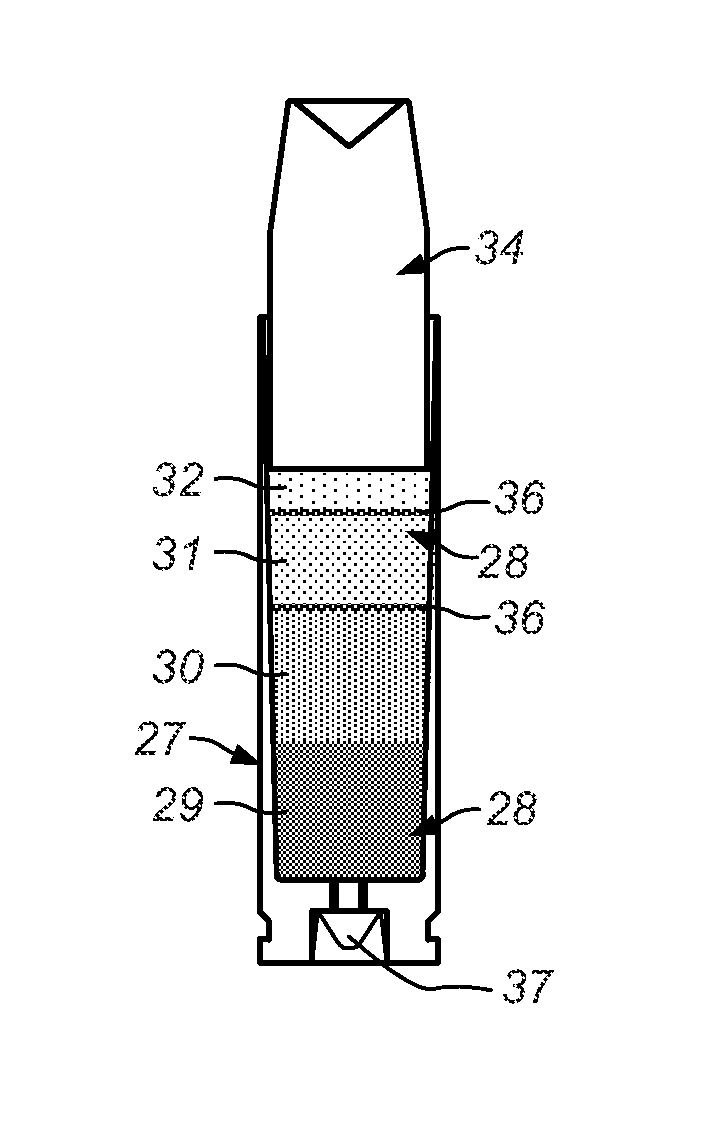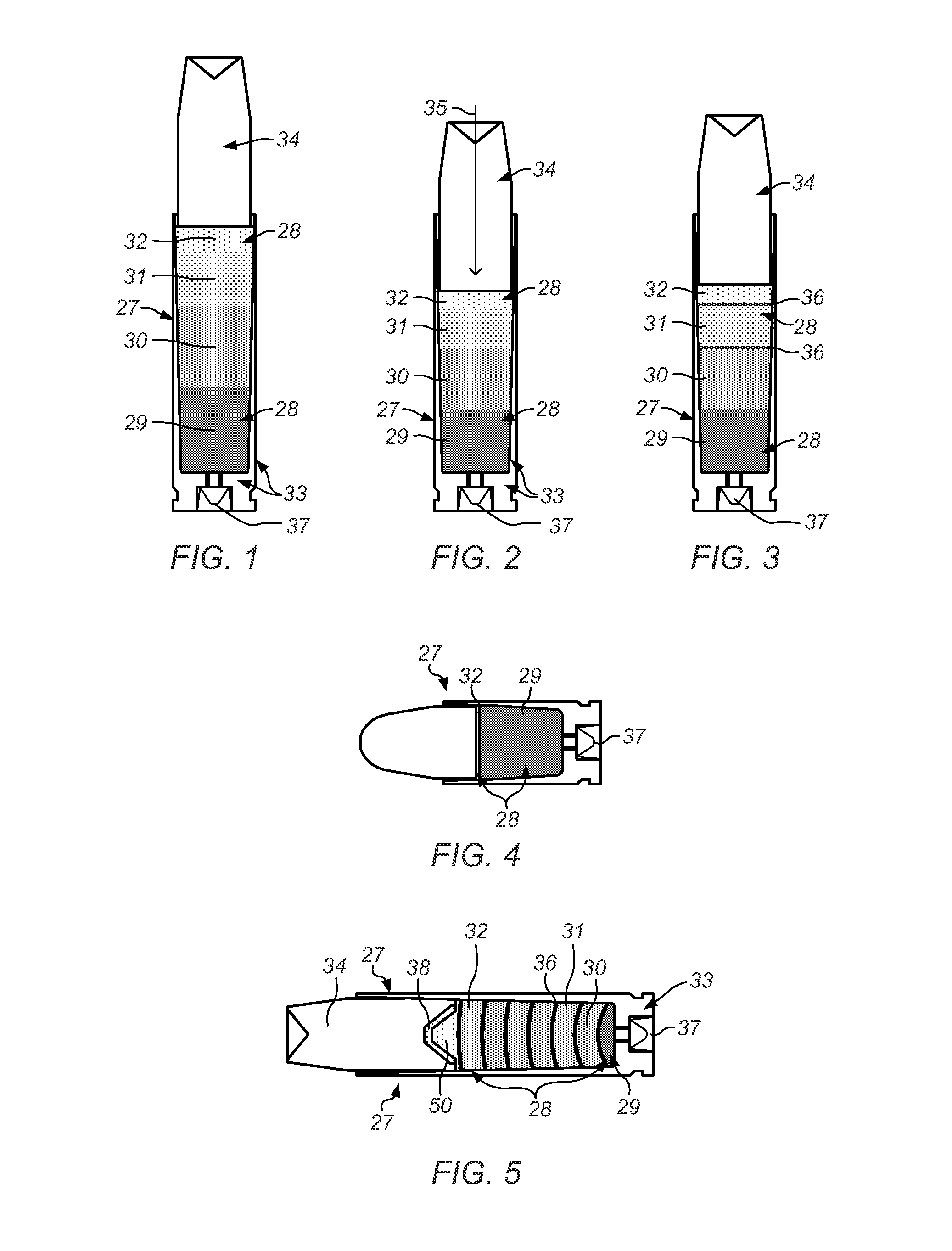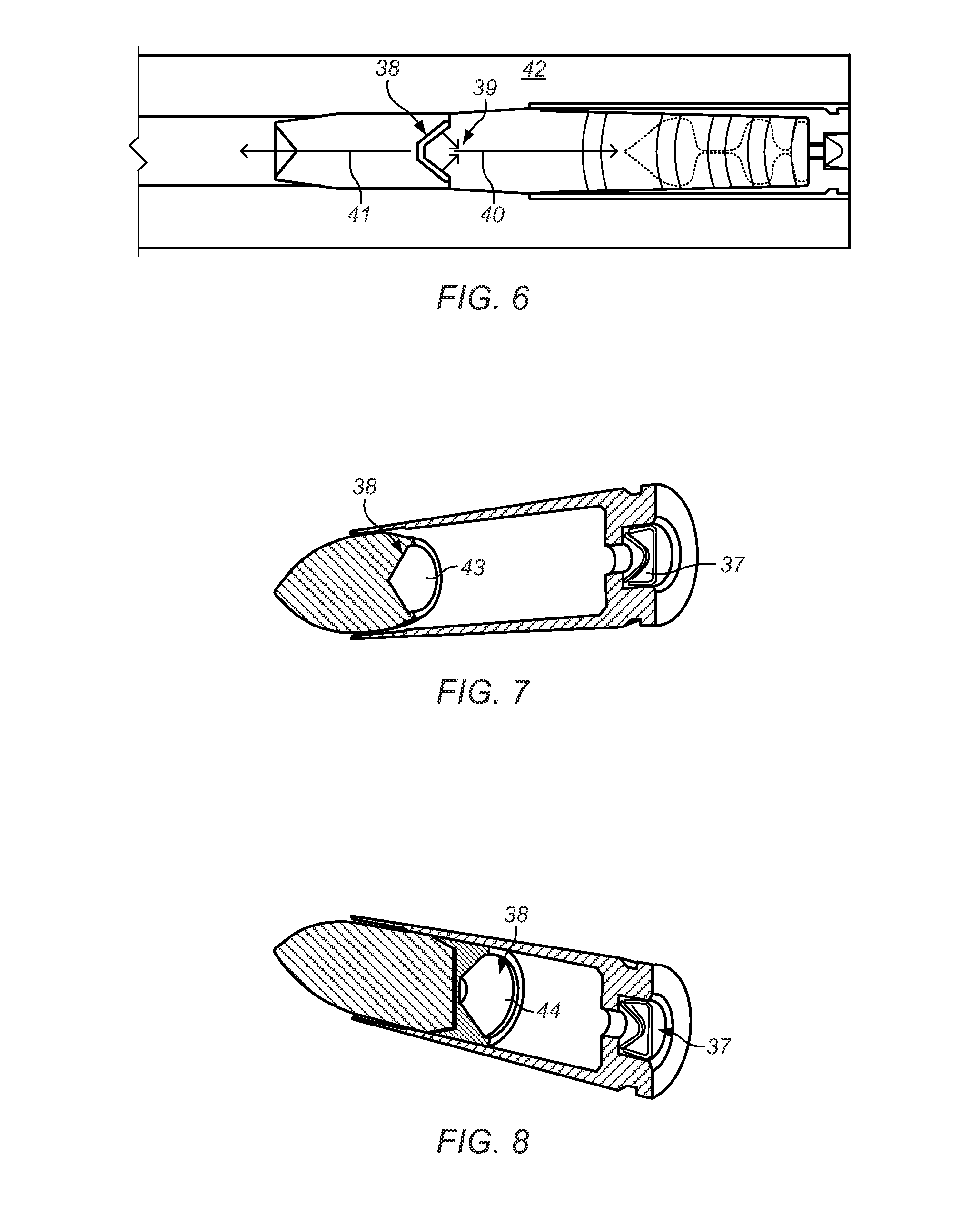Cartridge with rapidly increasing sequential ignitions for guns and ordnances
a technology of sequential ignition and cartridge, which is applied in the direction of cartridge ammunition, explosives, weapons, etc., can solve the problems of reducing adding unnecessary cost and complexity to manufacturing the desired cartridge-based solution, and reducing the efficiency of the full length of the desired barrel for acceleration, etc., to achieve efficient increase the sequential detonation, facilitate the expulsion of hyper-velocity projectiles, and increase the effect of velocity and pressure curv
- Summary
- Abstract
- Description
- Claims
- Application Information
AI Technical Summary
Benefits of technology
Problems solved by technology
Method used
Image
Examples
Embodiment Construction
[0063]In one set of embodiments, a cartridge may be loaded with a powder column of stratified or stacked layers of propellant, whereby each powder layer in the powder column is over-compressed to a specified degree, and the burn rate or modifier between layers may be controlled by the specified degree of over-compression applied to each respective powder layer of the powder column. More broadly, rapidly increasing faster powders may be provided in sequence, and instead of using complex barrier methods, the rate of burn between layers may be controlled by the volume of the layer and the amount of compression introduced to the layer.
[0064]Rather than attempting to extend the force applied from the chamber down the full length of a barrel, the application of a highly compressed powder column reduces the burn rate, and in some cases forces one or more of the powder layers to launch with the projectile down the barrel. In doing so, the powder column is forced to burn similar to the manne...
PUM
| Property | Measurement | Unit |
|---|---|---|
| pressure | aaaaa | aaaaa |
| volume | aaaaa | aaaaa |
| shape | aaaaa | aaaaa |
Abstract
Description
Claims
Application Information
 Login to View More
Login to View More - R&D
- Intellectual Property
- Life Sciences
- Materials
- Tech Scout
- Unparalleled Data Quality
- Higher Quality Content
- 60% Fewer Hallucinations
Browse by: Latest US Patents, China's latest patents, Technical Efficacy Thesaurus, Application Domain, Technology Topic, Popular Technical Reports.
© 2025 PatSnap. All rights reserved.Legal|Privacy policy|Modern Slavery Act Transparency Statement|Sitemap|About US| Contact US: help@patsnap.com



